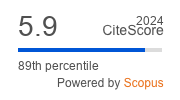Article | Open Access
21st Century Televisuality? Golden Ages and Collateral Damage in Industry Stress Research
| Views: | 1726 | | | Downloads: | 1301 |
Abstract: This article examines how the innovations of, and fallout from, the post-1980s US multichannel cable era both prefigured and were transformed by the 21st-century online platform streaming era. Intense corporate competition, in which traditional networks and studios collided with disruptive new firms, triggered producers to innovate new ways of financing, making, and conceptualizing media content. Both disruptions spurred mergers, bankruptcies, hostile takeovers, and collapsing institutional distinctions. At the same time, these periods of acute market uncertainty also triggered widespread forms of innovation in production, technical imaging, narrative content, seriality, programming strategies, and aesthetics. So much so that the periods have been deemed “The 2nd Golden Age of Television,” and a “European Television Fiction Renaissance,” respectively. Yet traditional qualitative paradigms like these can also divert scholars who intend or need to unpack, document, and explain two more modest industry realities. First, acute televisual stylizing and golden age attributions gloss over television’s and streaming’s less-remarkable but essential and problematic industrial routine. Second, celebrating industrial exceptionalisms often ignore the creative media workers that disruptive innovations inevitably displace; or they caricature routine workers as a monotonous “rule” that proves the talented rise-above-the-pack “exception.” I have tried to look beyond the vanguard masterworks in the two historical disruptions. My research focuses on habitual practices in production, in order to unpack the collateral damage, the “industrial ashes” that “media peaks” and masterpieces often (necessarily) arise from. Fieldwork and human-subjects research in media industry studies make it difficult to overlook the human costs and displaced workers that have followed in the wake of aesthetic and technical innovations in both periods. Drawing on the ethnographic fieldwork for Specworld (Caldwell, 2023), this article targets one problem scholars unavoidably face if they hope to account for the habitual, the losers, and the routine in worlds of production. Taking this approach makes justifying one methodological framework a precondition for scholarship: the scope of the evidence or data media scholars intend to “sample” in research on the immense complex production systems that characterize both periods. As an alternative to the bracketed-off masterworks, “quality television” (or “cinemas”), and auteurs favored by arts and humanities scholars, research on complex media ecosystems requires finding a system-wide logic or basis for the evidence gathered. I argue that production rifts and fractures offer scholars unintended (unplanned and uncensored) self-portraits of what complex industries “betray” as most important to the system as a whole. In proposing “rift-trace data-sampling” for evidence I argue that industrial failures (rather than masterworks) act as unintended, even subconscious disclosures of key industrial practices. Triggered disclosures of this sort may offer a more convincing way to understand the televisual complexities—and system-wide functions—of golden-age digital innovations.
Keywords: creative labor; exceptionalism; media ecosystem; precarity; production culture; routine; stylization; technical innovation; televisual
Published:
© John T. Caldwell. This is an open access article distributed under the terms of the Creative Commons Attribution 4.0 license (http://creativecommons.org/licenses/by/4.0), which permits any use, distribution, and reproduction of the work without further permission provided the original author(s) and source are credited.


